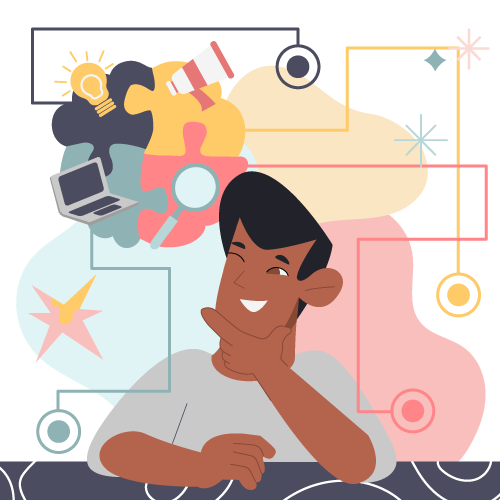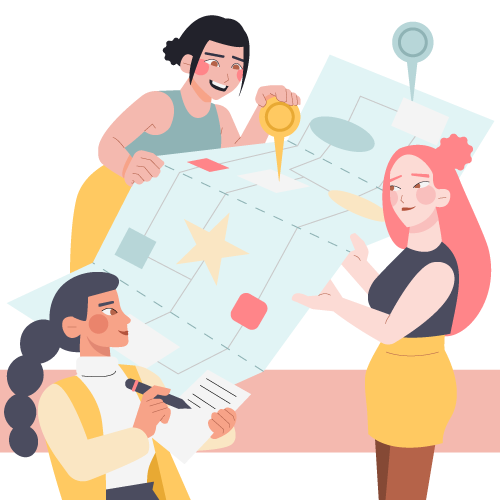The world around us is constantly evolving, demanding continuous learning to stay ahead and thrive. Whether you’re in the early stages of your career or a seasoned professional, acquiring new skills and knowledge is crucial for success.
However, participating in training programs doesn’t always translate to effective learning. We’ve all struggled to focus or stay engaged during lectures or presentations. Information overload, distractions, and even a lack of clear learning goals can hinder our ability to fully absorb valuable insights.
But what if you could unlock your learning potential and transform yourself into a “super learner?”
This article equips you with practical strategies backed by science to significantly boost your focus, engagement, and knowledge retention during training sessions. By implementing these techniques, you’ll be well on your way to mastering your own learning journey.
12 ways to become a better learner
1. Set clear learning goals
Knowing your “why” is crucial for motivation and focus. Before the training session, take a few minutes to define your personal learning goals. What specific skills or knowledge do you hope to gain? Having a clear purpose will help you actively seek out relevant information and stay engaged throughout the session.
2. Pre-read materials and activities
Many training programs offer pre-reading materials like articles, case studies, or even short quizzes. Engaging with these resources beforehand helps activate relevant background knowledge and familiarize you with key concepts.
This “priming” effect prepares your brain to make stronger connections with new information presented during the training.
3. Go beyond lectures
Passive learning, relying solely on listening, can lead to information overload and decreased focus. Active learning, on the other hand, keeps you mentally engaged and promotes deeper understanding.
4. Embrace active learning techniques
There’s a toolbox of techniques to transform a passive learning experience into an active one. Taking notes, summarizing key points, or creating mind maps while listening helps you process information and identify important connections.
Engaging in discussions, group activities, or asking questions further solidifies your understanding and strengthens neural connections in your brain.
5. Identify your distractions
Internal distractions like stress or boredom can be just as disruptive as external ones. Be mindful of your personal triggers and develop strategies to manage them.
6. Silence the noise
Put your phone on silent, close unnecessary browser tabs, and inform colleagues or family members about your need for focused learning time. Choosing a quiet environment further reduces external distractions.
7. Use time-management techniques
Feeling overwhelmed? Try the Pomodoro technique. This method involves working in focused 25-minute intervals with short breaks in between. This helps maintain focus and prevents mental fatigue.
8. Bridge the gap
New information is more readily absorbed when linked to existing knowledge. Actively seek connections between the training content and your past experiences or current work challenges.
9. Reflect and apply knowledge
Take time after the training to reflect on what you learned. How can you apply this knowledge to real-world situations? Jot down key takeaways and brainstorm ways to implement them in your work.
10. Metacognition: Think about your thinking
Developing metacognition, or “thinking about your thinking,” allows you to monitor your learning process. Are you having difficulty grasping a concept? Do you need to revisit a specific topic? By being aware of your learning needs, you can adjust your approach and maximize your understanding.
11. Use spaced repetition
Cramming for a test might work in the short term, but it doesn’t translate to long-term memory retention. Utilize spaced-repetition techniques, like flashcards or spaced-retrieval practice tools, to revisit key concepts at progressively increasing intervals. This strengthens the retrieval pathways in your brain, making it easier to access information in the future.
12. Explore self-testing and summarizing
Don’t wait for a formal assessment to test your understanding. Challenge yourself by summarizing key points in your own words or practicing explanations of what you learned. This active recall process helps solidify information in long-term memory.
By implementing these practical strategies, you’ll be well on your way to becoming a super learner, actively engaging in learning and maximizing your knowledge retention during training sessions.
Keep Growing, Keep Learning
By implementing practical strategies like active participation, spaced repetition, and connecting new information to your existing knowledge, you’ll transform yourself from a passive participant to an active knowledge seeker.
Remember, the key to unlocking your full learning potential lies in consistent application and a growth mindset. Embrace the journey of continuous learning, and watch yourself become a super learner!





